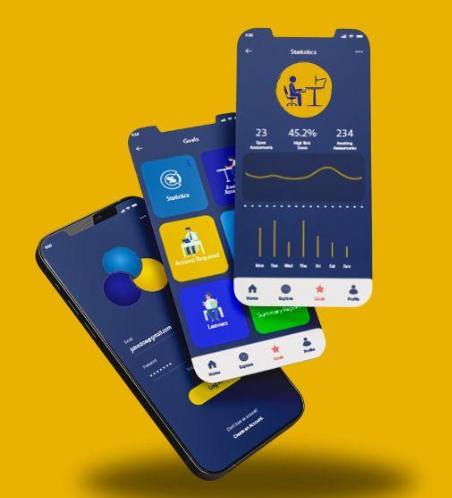The Ultimate Guide to Choosing the Best DSE Self-Assessment Software for Your Business
Do you manage a team that spends hours every day in front of a screen? Then you already know how small desk discomforts can quickly turn into bigger problems—back pain, eye strain, and stiff necks are just the beginning. That’s when using DSE self-assessment software becomes the smart choice.
It’s more than just a tool—it’s a smarter, faster way to help your employees stay comfortable and safe, while also saving your company time and effort.
If you’re in charge of workplace health and safety, you’re probably familiar with Display Screen Equipment (DSE) assessments. These checks help identify risks linked to screen use—whether it’s a computer, tablet, or phone. Employees often do these assessments themselves, and that’s exactly what this software is built for.
What to Look for in a Good Solution
1. Easy for Employees to Use
Your staff shouldn’t need tech skills to fill out a simple assessment. Look for software that uses pictures, simple questions, and clear instructions. The easier it is, the more likely your team will complete it correctly.
2. Fast Setup for You
You don’t want to spend hours setting up another tool. A good system should let you upload your staff list, send out invites, and start collecting responses in minutes. Time is money, and you shouldn’t waste either.
3. Smart Reporting
Once the assessments are done, what happens next? A helpful system will sort the results for you, highlight risks, and recommend what action to take. This way, you’re not digging through spreadsheets or guessing what to do next.
4. Custom Questions (Only If You Need It)
Most businesses can use standard DSE questions. But some may need extra ones—for example, if your team uses special equipment. Make sure the software gives you the choice, without making things too complicated.
The Extra Help That Makes a Difference
1.Instant Feedback for Staff
Good systems don’t just collect answers—they also teach. If an employee says their chair isn’t right or their monitor is too low, the tool can give tips right away. This helps fix small problems fast, before they become health issues.
2.Save Time with Reminders
Forget chasing people by email. Pick software that sends automatic reminders to staff who haven’t completed their assessment. You stay in control, but without the manual work.
3.Works for Hybrid Teams
Got some people in the office and others working from home? No problem. The right solution works anywhere with internet access. That way, you don’t have to treat remote and office workers differently.
Why Basic Checks Aren’t Always Enough
Many businesses look for something more than just the basics. That’s where Ergo self assessment software really helps. It can give deeper insights, especially if your team includes workers with special needs or different roles.
These tools may ask extra questions about keyboard height, wrist support, or lighting in the workspace. For companies that want to go beyond just ticking the health and safety box, this kind of system is a good step forward.
Security and Privacy Matters
Let’s not forget: you’re handling employee health data. That means you need software that keeps that information private and secure. Look for tools that store data safely and give access only to the people who need it.
You should also be able to export reports easily, in case you need to share them with HR or senior management. If your current system doesn’t let you do that, it’s time to move on.
Support When You Need It
Even the best software can come with questions. What if someone can’t log in? What if a report doesn’t look right? Make sure the company offers proper support—by email or phone—and clear guides to help you fix things fast.
Some systems even give you access to ergonomics experts. That’s a bonus if you want help reviewing risk areas or solving tricky problems.
Budget: What Should You Expect?
Good ergonomic software doesn’t have to break your budget. Some offer free trials, so you can test them before committing. Others price based on how many employees you have, which can be more flexible for smaller teams.
Don’t just go for the cheapest. Think about how much time it saves and how much it helps your team stay healthy. A system that prevents even one injury can pay for itself very quickly.
One Platform, Many Gains
The right system isn’t just about ticking boxes. It helps you:
- Reduce staff discomfort and complaints
- Cut down on workplace injuries
- Save time on manual admin
- Stay legally compliant
- Support remote workers just like in-office ones
This isn’t just about avoiding problems—it’s about making your team feel supported and valued.
Take the Hassle Out of Workplace Assessments
If you’re looking to make workplace assessments easier, smarter, and more effective, a reliable DSE self-assessment software is a smart move. It takes the pressure off your shoulders, helps your team work more comfortably, and gives you peace of mind.
One option that’s getting strong reviews from many businesses is KOS Ergonomic. It’s built for teams of all sizes, with features that actually make your job easier. Give it a look—you might find it’s exactly what you need.

